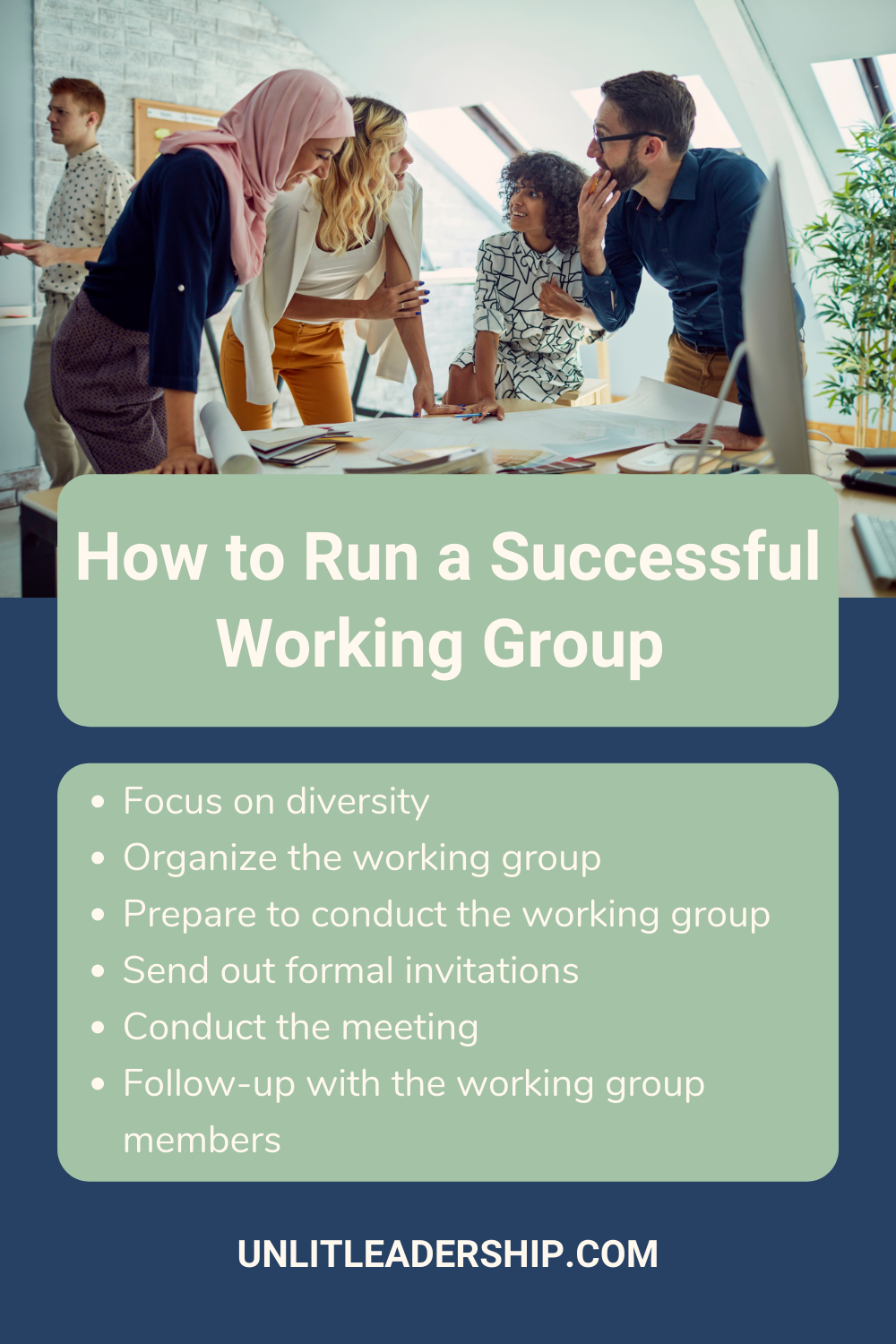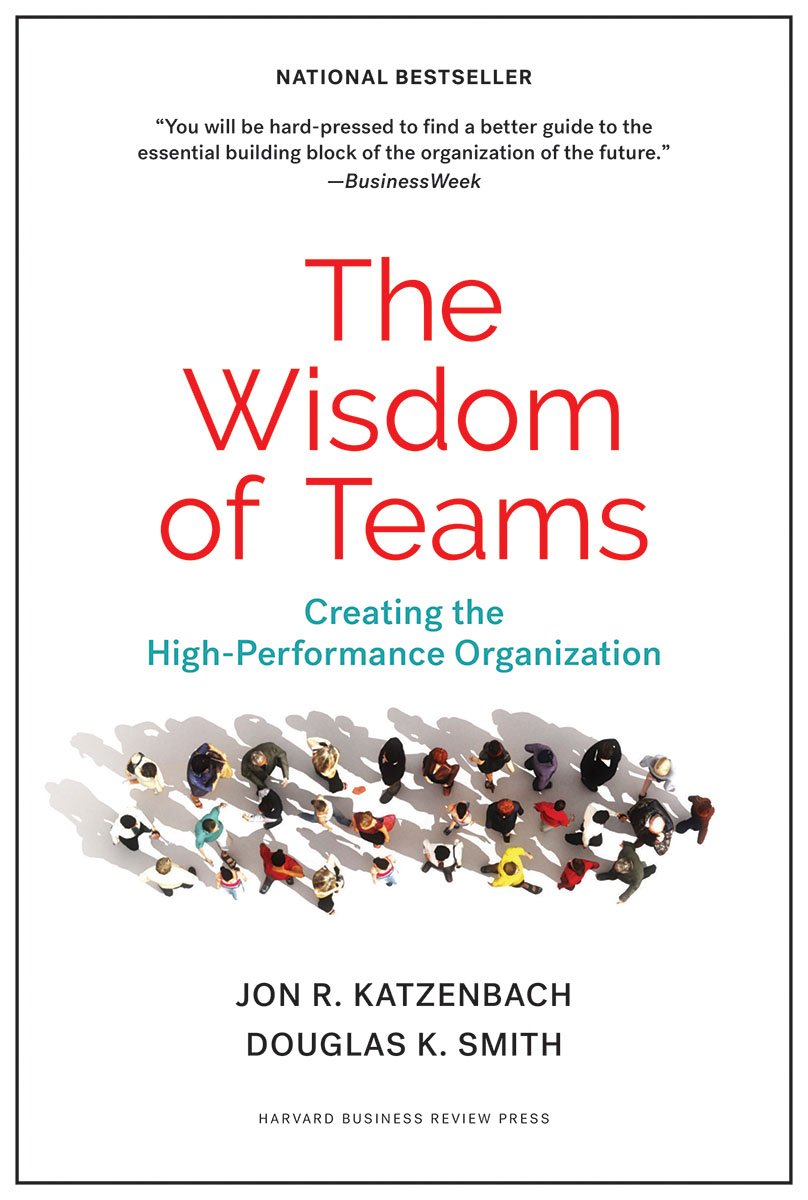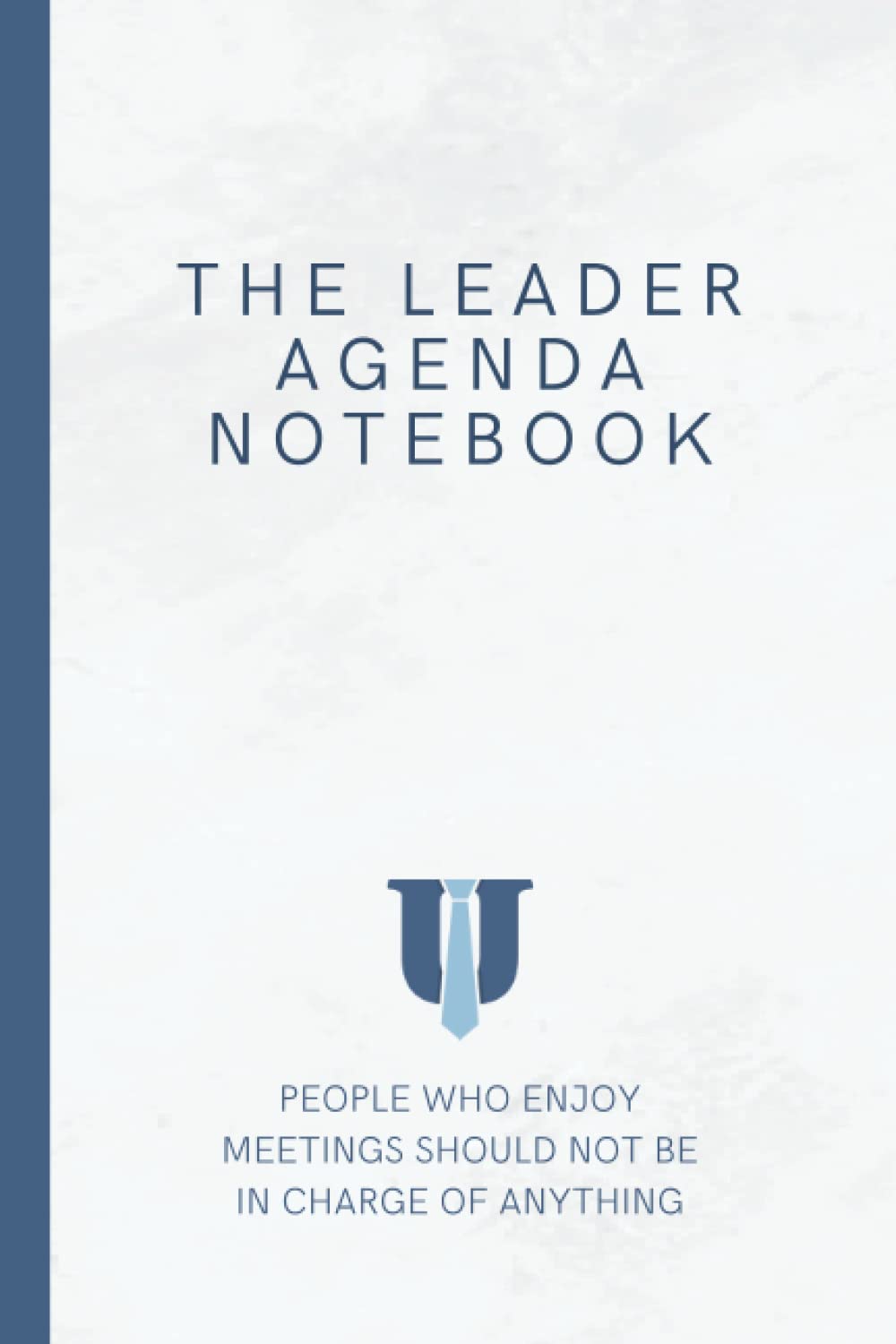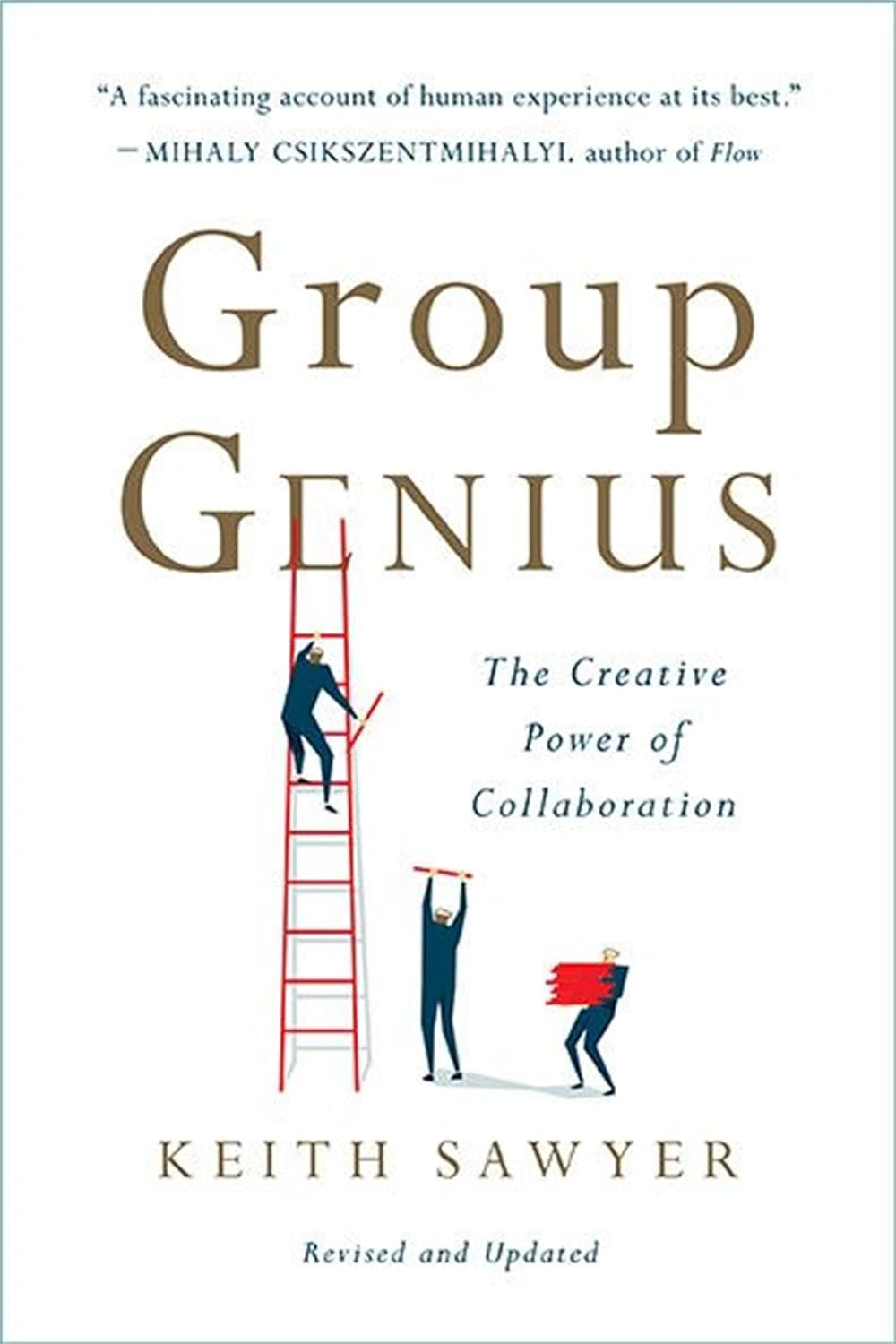Working groups are a great way to bring together professionals with similar interests and collaborate. The nature of working groups means they can often lack structure and clear goals. The goal is to have everyone bring in their unique expertise and knowledge so that together, they can develop a solution that fits your needs and the needs of those who signed up for it.
Table of Contents

Key Takeaways
- Emphasize Diversity: Leverage group members’ diverse experiences and viewpoints for better problem-solving.
- Organize Effectively: Choose the right members and keep the group size manageable.
- Prepare Thoroughly: Be knowledgeable about the topics and ensure all resources are ready.
- Send Formal Invitations: Provide clear and complete meeting details.
- Conduct the Group Efficiently: Establish credibility, value input, manage conflicts, and focus on objectives.
- Follow-up: Send thank-you notes, share minutes, and acknowledge contributions.
My experience with working groups
Recruiting and retaining quality cyber warrant officers are just a couple of my many responsibilities. When I first arrived at my current job, my office tasked me to provide solutions on acquiring and then retaining the best cyber talent for the Army Cyber Warrant Officer Cohort. I knew that I could not accomplish this task in a bubble, and despite my expertise, I decided to reach out to several leaders who would help develop viable solutions. I set up a working group to review the challenges and help devise solutions. To make sure you’re getting the most out of each session, consider these tips on how to run a successful working group.
How to Run a Successful Working Group

Focus on Diversity
One of the great things about the military is the diversity across its leadership ranks. The ability to harness the expertise, knowledge, and unique viewpoints of leaders from varying backgrounds has proven to be the key to how to run a successful working group. For this reason, I believe the military successfully solves challenging problems, especially when resources and time are scarce.
According to McKinsey, companies ranking in the top quartile of executive-board diversity were 35% more likely to outperform the industry medians financially. Similarly, Cloverpop research found that inclusive teams make better business decisions 87% of the time.
For this reason, great leaders seldom make decisions or tackle complex problems in a bubble. They understand that the power of a good leader resides not in their abilities but in integrating and maximizing diverse ideas and solutions—diversity of ideas, perspectives, and backgrounds is critical to how to run a successful working group.
Organize the working group
- Decide whether a working group is the right approach – Working groups are similar to projects; they should have a definite life cycle and be temporary. If the working group wants to tackle an enduring initiative, you may be conducting operations. Also, leaders should form working groups to attack a problem that requires multiple perspectives or a group of SMEs.
- Choose the right leaders to participate – Choosing members of a working group is not a popularity contest, so make sure you select individuals who will be value-added and who will offer their unique perspectives and expertise. Also, ensure you have a diverse group of leaders, not only with gender and nationality but in mindset.
- Keep the group manageable – Numerous studies have shown how many people should form a working committee or team. According to Paul Axtell from the Harvard Business Review, the ideal number for a meeting is between 5 – 8. On the other hand, Evan Wittenberg, director of the Wharton Graduate Leadership Program, places the ideal number between 5 to 12. So, what is the right amount? It depends on the goals and what you want to accomplish. My working group included 12 of the various technical leaders from across the Army, which was highly successful. Though I have held other meetings with five or fewer individuals, they have been just as effective.
“A diverse mix of voices leads to better discussions, decisions, and outcomes for everyone.”
Sundar Pichai, CEO of Google
Prepare to conduct the working group
Contact the leaders you want to attend. You can contact them by phone, in person, or e-mail, and give them your elevator speech about what you want to accomplish and why you are requesting their assistance. The personal touch helps with buy-in and emphasizes the value you place on their input; remember you have chosen these individuals due to their invaluable information.
Self-Prep: There is nothing worse than attending a working group, and the group leader is unprepared. Here are a few steps to ensure you make a great impression and adequately prepare to lead this diverse group of leaders.
- Know your stuff – You should be well versed in the background information surrounding the problem you plan to address. Background information includes the proposed solutions and the pros and cons of each. A review of the various attendees and their expertise so you can maximize what each brings to the table.
- Check the resources before the meeting – If you use multimedia resources, such as PowerPoint slides, teleconference equipment, or digital collaboration platforms, ensure you test everything prior. Testing will help mitigate any technical difficulties that may arise.
- Practice – I am always amazed at how many experienced leaders are unprepared for their meetings, committee meetings, or working groups. No matter your level of experience, practice will yield tremendous benefits. You should go over your discussion points, your schedule and do a dry run utilizing the same equipment you will use during the actual meeting (i.e., slide clicker, projection screen, computer, etc.).
Send out formal invitations
Send out the official invite once you have received an informal head nod from your attendees. My organization uses Outlook, so it is pretty easy to set up a meeting, complete with calendar invites and tracking for attendees. However, any program will work; make sure you use what works for most of your attendees. In the invitation, you should include the following:
- The 5 W’s – You would be surprised at how many invites I receive that lack critical information such as where the meeting will be, times, or duration. Ensure that your invite contains the what, when, why, who, and where. Be clear on the expected outcomes. If you are going to pull together a group of leaders or SMEs, ensure you are clear on what you are trying to accomplish.
- Background information & resources – Make sure that everyone has the baseline knowledge needed to provide informed input. So, ensure you provide pre-reads and the latest information concerning the challenge or problem you will address. Also, make sure you include an agenda. It is an excellent idea to provide attendees with a look into what you plan to discuss and the meeting’s flow.
- Contact information – Be sure to include your contact information or, better yet, link to a collaboration forum if leaders want to begin some pre-collaboration or need to get in touch before the meeting.
Run the working group
Bringing diverse leaders together can be a challenge, but if you have done the appropriate prep work, these next steps should be easy. Now that you have completed the prep work, it is time to ensure you maximize the group’s unique experience to accomplish the desired outcomes. Every working group is different but below are a few pointers for running the working group.
- Establish credibility – If individuals are unfamiliar with each other, have everyone introduce themselves along with their expertise. The introductions will help others in the group get a feel of their teammates’ strengths.
- Value input – Leaders are usually Type A personalities, and therefore, you will need to balance providing an opportunity for input with keeping the group on task and schedule. However, remember that you have gathered this group because they have valuable input. Allow team members to provide relevant input and reel the team back in when the discussion veers off-topic.
- Embrace conflict – The likelihood of everyone agreeing is doubtful, and truthfully you do not want a total agreement. You want different viewpoints. Just be ready to jump in and redirect the discussion when the conversation strays from polite disagreement to adversarial. One way to help with this is to have a timekeeper and a recorder. This way, the individual can assist you in keeping the meeting flowing
- Stay on task and schedule – One of the reasons you self-prep is to ensure that your account for time and are clear on the direction you would like the group to go. Make sure you stick to your timeline and keep focused on your objectives. You should quickly identify valuable input that leads to actionable solutions. Likewise, it would be best if you promptly determined when teammates are admiring the problem without providing actionable information so that you can direct the team back on task.
Follow-up with working group members
After the meeting, you will still have work that needs completing. It would be best if you now consolidated input, document feedback, and possibly prepared for follow-on meetings. There are also a few steps necessary to properly close out the working group.
- Follow-up thank you note – As I mentioned earlier, the attendees offered their free time to help you solve a complex problem, and therefore the least you can do is follow up with a thank-you note. You can send your notes via e-mail to the group. If the group is small, it may be a good idea to contact each attendee by phone or in-person to thank them for their time and efforts.
- Do not forget the minutes – Make sure you consolidate the minutes and provide them back to the attendees. This follow-up serves to inform the group of what the team discussed and allows for a check to ensure you adequately captured their input.
- Inform the working group of your progress – As you address the identified problems for which the working group provided solutions, provide feedback on the progress. Did any of the solutions pan out? Did a particular member’s input lead to a breakthrough?
- Acknowledge contributions – When I am successful in solving a problem due to a working group’s efforts, I ensure I publicly acknowledge their contributions. You will likely call on some or all these individuals again. Therefore you want to ensure they know the value of their efforts. Remember that no great endeavor was ever accomplished alone.
Leader Resources
For those interested in further exploring the concepts related to teams and running successful working groups, I recommend the following books as a starting point.
Unlit Leadership participates in the Amazon Services LLC Associates Program, an affiliate advertising program designed to provide a way for websites to earn advertising revenues by advertising and linking to Amazon.com. As an Amazon Associate, I earn from qualifying purchases.
FAQs
What makes a working group successful?
Successful working groups are marked by diversity, effective organization, thorough preparation, and efficient conduct.
Why is diversity important in a working group?
Diversity in experiences and viewpoints enhances problem-solving and decision-making.
How should a working group be organized?
Carefully choose members and keep the group size manageable for effective collaboration.
What are the key steps to prepare for a working group meeting?
Be well-informed about the topics and ensure all necessary resources are available.
What’s the importance of formal invitations in working groups?
Formal invitations provide clear and complete meeting details, setting the tone for professionalism.
How should a working group meeting be conducted?
Establish credibility, value all inputs, manage conflicts effectively, and focus on objectives.
What follow-up actions are recommended after a working group meeting?
Send thank-you notes, share minutes, and acknowledge the contributions of all members.
Conclusion
Leaders are only as good as their teams. Working groups are fantastic tools that leaders can use to take advantage of their teams’ diversity fully. By harnessing the powers of various mindsets and diverse backgrounds and experiences, leaders can solve complex problems. Using the steps outlined above, leaders will be better prepared to organize and lead a diverse team and master how to run a successful working group. If you liked the article above, please feel free to comment or check out other articles about diversity, such as Managing Diversity at Home: 3 Keys to Success.






